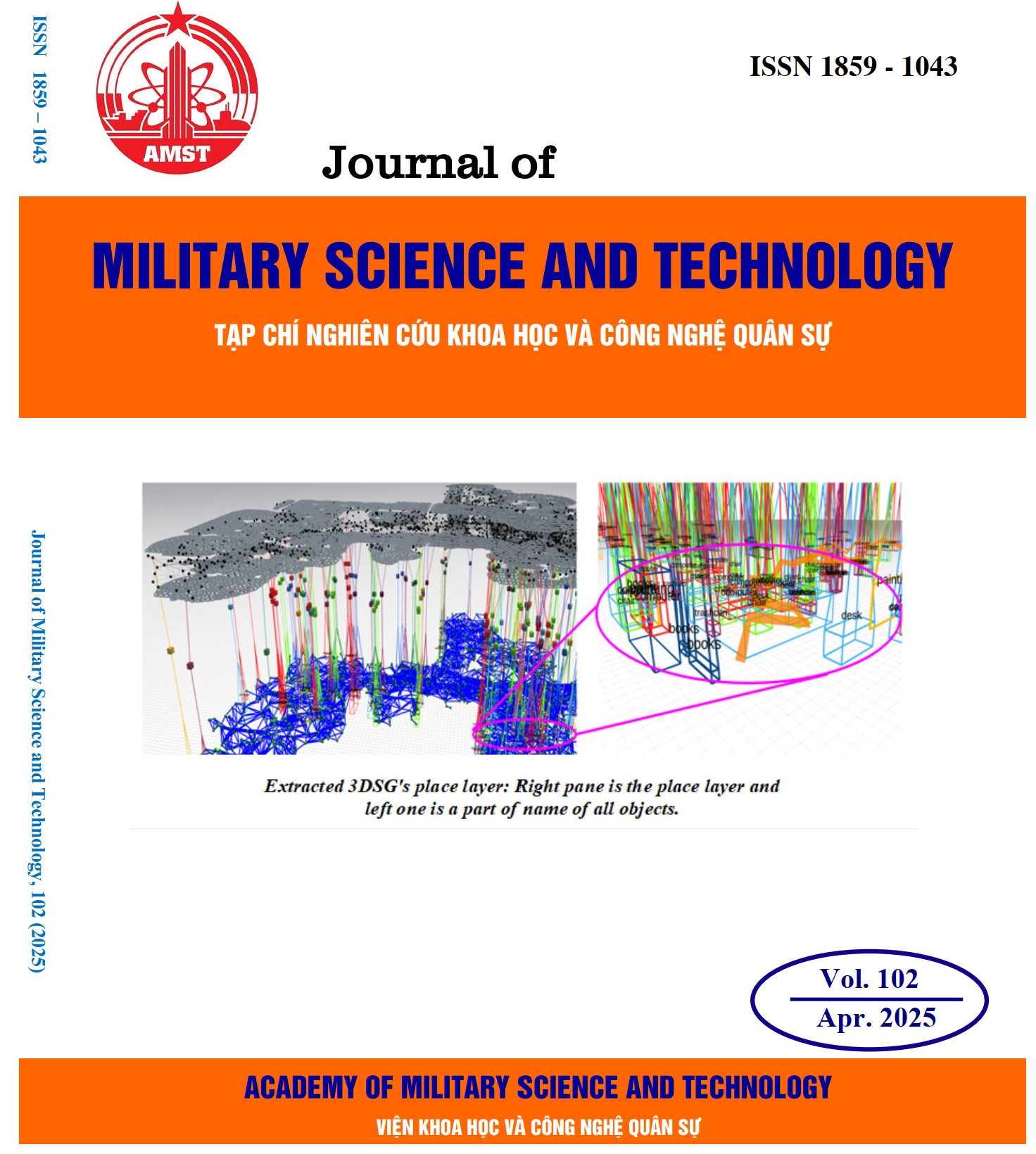Thuật toán mã hóa và giải mã song song với kiến trúc phần cứng tối ưu cho mã Polar để giảm độ phức tạp và thời gian xử lý
352 lượt xemDOI:
https://doi.org/10.54939/1859-1043.j.mst.102.2025.51-59Từ khóa:
Mã Polar; Mã hóa và giải mã song song; Kiến trúc phần cứng tối ưu.Tóm tắt
Bài báo này trình bày việc phát triển một thuật toán tương đương đơn giản hóa để mã hóa và giải mã song song hoàn toàn mã Polar, giúp giảm độ phức tạp tính toán và độ trễ xử lý so với các phương pháp mã hóa và giải mã hóa song song hiện tại. Thuật toán được triển khai trong môi trường System Generator/Vitis Model Composer với khả năng tham số hóa, đảm bảo tính linh hoạt và dễ dàng điều chỉnh thiết kế FPGA để đáp ứng các tiêu chuẩn tương lai. Độ chính xác của thiết kế được kiểm chứng bằng mô phỏng MATLAB với mã chuẩn 3GPP. Ngoài ra, tổng hợp RTL thông qua Vivado đã cải thiện đáng kể cả độ trễ và thông lượng.
Tài liệu tham khảo
[1]. 3GPP TS 38.212, “3GPP Technical Specification Group Radio Access Network; Evolved Universal Terrestrial Radio Access (E-UTRA); Multiplexing and channel coding (Release 15)”, v15.2.0 (2018).
[2]. K. Niu and K. Chen, “Stack decoding of polar codes,” Electronics Letters, Vol. 48, No. 12, pp. 695–696, (2012). DOI: https://doi.org/10.1049/el.2012.1459
[3]. O. Afisiadis, et al., “A low-complexity improved successive cancellation decoder for polar codes,” in 2014 48th Asilomar Conference on Signals, Systems and Computers, Pacific Grove, CA, USA, pp. 2116–2120, (2014). DOI: https://doi.org/10.1109/ACSSC.2014.7094848
[4]. K. Chen, K. Niu, and J. Lin, “Improved successive cancellation decoding of polar codes,” IEEE Transactions on Communications, Vol. 61, No 8, pp. 3100–3107, (2013), Doi:10.1109/TCOMM.2013.070113.120993 DOI: https://doi.org/10.1109/TCOMM.2013.070213.120789
[5]. I. Tal and A. Vardy, “List Decoding of Polar Codes,” IEEE Transactions on Information Theory, Vol 61, No 5, pp. 2213–2226, (2015), DOI: 10.1109/TIT.2015.2410251. DOI: https://doi.org/10.1109/TIT.2015.2410251
[6]. M. Rowshan and E. Viterbo, "Improved List Decoding of Polar Codes by Shifted-pruning," 2019 IEEE Information Theory Workshop (ITW), Visby, Sweden, pp. 1-5, (2019). Doi: 10.1109/ITW44776.2019.8989330 DOI: https://doi.org/10.1109/ITW44776.2019.8989330
[7]. Y. Peng; X. Liu; J. Bao, "An Improved Segmented Flipped Successive Cancellation List Decoder for Polar Codes," IEEE 6th International Conference on Computer and Communications (ICCC), Chengdu, China, (2020). Doi:10.1109/ccwc51732.2021.937593 DOI: https://doi.org/10.1109/ICCC51575.2020.9345126
[8]. B.Yuan; P. K. Keshab; “Low-Latency Successive-Cancellation List Decoders for Polar Codes With Multibit Decision,” IEEE Transactions on Very Large Scale Integration (VLSI) Systems, Vol. 23, pp. 2268 -2280, (2014), Doi:10.1109/TVLSI.2014.2359793 DOI: https://doi.org/10.1109/TVLSI.2014.2359793
[9]. H. Yoo, and I. C. Park, "Partially Parallel Encoder Architecture for Long Polar Codes," IEEE Transactions on Circuits Systems II Express Briefs, Vol. 62, no 3, pp.306-310, (2015). Doi: 10.1109/TCSII.2014.2369131 DOI: https://doi.org/10.1109/TCSII.2014.2369131
[10]. E. Arikan, “Channel polarization: A method for constructing capacity Achieving codes for symmetric binary-input memoryless channels,” IEEE Trans. Inf. Theory, Vol. 55, No 7, pp. 3051-3073, (2009), Doi:10.1109/tit.2009.2021379 DOI: https://doi.org/10.1109/TIT.2009.2021379
[11]. A. Arpure, and S. Gugulothu, "FPGA implementation of polar code based encoder architecture," International Conference on Communication and Signal Processing (ICCSP), Melmaruvathur, India, (2016), Doi: 10.1109/ICCSP.2016.7754231 DOI: https://doi.org/10.1109/ICCSP.2016.7754231
[12]. M. Rowshan; et al., "Logarithmic Non-uniform Quantization for List Decoding of Polar Codes," 2021 IEEE 11th Annual Computing and Communication Workshop and Conference (CCWC)}, NV, USA, (2021). Doi:10.1109/ccwc51732.2021.9375932 DOI: https://doi.org/10.1109/CCWC51732.2021.9375932
[13]. G.Sarkis, et al., "Flexible and Low-Complexity Encoding and Decoding of Systematic Polar Codes," IEEE Transactions on Communications, Vol. 64, No 7, pp. 2732 – 2745, (2016). Doi: 10.1109/TCOMM.2016.2574996 DOI: https://doi.org/10.1109/TCOMM.2016.2574996
[14]. U. M. N. Raj, and E. V. Narayana, "An advanced architecture with low complexity of partially parallel polar encoder," International Conference on Communication and Electronics Systems (ICCES), Coimbatore, India, (2016). Doi: 10.1109/CESYS.2016.7889957. DOI: https://doi.org/10.1109/CESYS.2016.7889957
[15]. Sarkis, Gabi et al., “Fast Polar Decoders: Algorithm and Implementation”, IEEE Journal on Selected Areas in Communications, Vol.32, No. 5, pp. 946-957, (2014). Doi:10.1109/JSAC.2014.140514 DOI: https://doi.org/10.1109/JSAC.2014.140514
[16]. UG897, “Vivado design suite user guide: model-based dsp design using system generator”, in: Xilinx User Guide, (2020).







